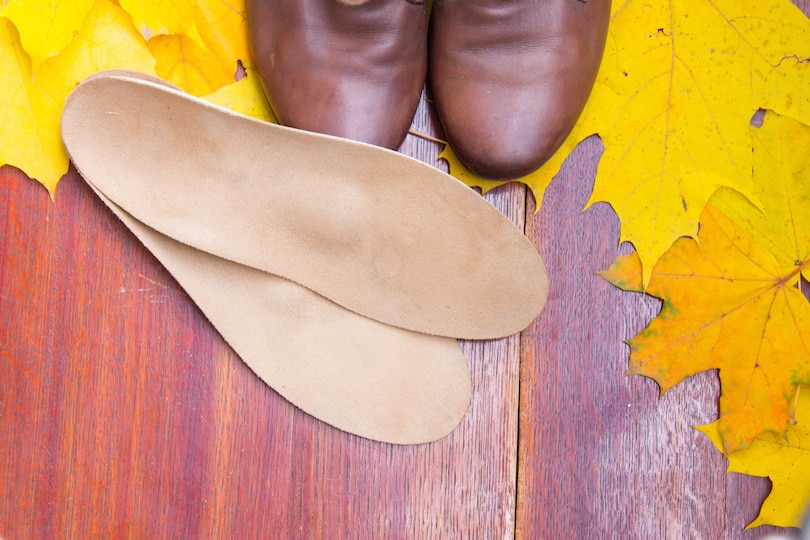We all rely on support systems of some sort, whether physical, emotional, or spiritual. These are not signs of weakness, but should be seen as valuable assets in your life. The fact that these means of support exist and are available to you is a richness that should not be abused.
Orthotic devices are a physical form of support for many patients who live with pain or conditions related to foot structure. But, in other ways, having more mobility and freedom from discomfort can be emotionally supportive as well.
When it comes to treatments that may be recommended for comfort and relief, it’s important to have a full understanding of what they are and do. Having the wrong expectations can cause disappointments and even mistakes in the way these helpful tools are used.
There are some beliefs about orthotics and their use that can be misguided. We’ll take a deeper look at some of these for a better understanding of what to expect if orthotics are brought up as a form of treatment.

Misconception: Orthotics Will Eventually Fully Cure My Problem
Orthotics are designed to provide cushioning and support in response to areas of excess stress and strain. Terms such as “correction” are often used in regard to this, which might lead some to think that orthotics are similar to braces for the teeth: wear them long enough and you can eventually be “set straight.”
It is true that the use of orthotics may somewhat help the base structure of your feet by providing overstressed areas more opportunity to recover and strengthen. But they will not be capable of fully shifting your foot structure back into a normal shape where you will no longer need them anymore.
While your orthotics may need adjustment as time goes on and the structure of your foot slightly shifts, you should expect to use orthotics on a permanent basis. However, with the comfort they provide, the benefit far outweighs the commitment!
Misconception: Over the Counter Orthotics are “Good Enough” Compared to Custom Orthotics
You have no doubt seen the kiosks at stores and pharmacies. Simply step on the mat, let the device read your pressure points, and take the recommended insert number to start feeling relief!
Store-bought inserts come at a fraction of cost of those that are custom-made based on the prescription of a podiatrist. That is true, and it makes the idea of over-the-counter orthotic inserts quite tempting. But for a fraction of the cost, you are likely only getting a fraction of benefit—if even that.
No two pairs of feet have exactly the same structure or the same exact needs in regard to cushioning and support. Custom orthotics address this by creating inserts based on a prescription specific to each patient. The custom orthotics you have, then, are the best fit for you and only you.
Store-bought orthotics, on the other hand, are “one size fits many” devices. They may provide some cushioning that can improve your discomfort, but odds are extremely high that they will not provide the exact levels of cushioning and support you need for long-lasting aid.
Additionally, a cheaper price means cheaper materials. Inserts bought at a store will last for much less time than custom-made orthotics designed with much more durability in mind. With proper maintenance and refurbishment, a pair of custom orthotics can last a year (or longer).
If cost is a concern with custom orthotics, many insurance plans openly cover the cost of a pair of orthotics each year. We will be happy to look into your insurance plan to see what your options may be.

Misconception: Orthotics are Only for Older Individuals
This is simply untrue. If you have the mental image of orthotics being a mark of old age, you’re only fooling yourself!
Orthotics can be helpful not only for adults, but for young adults and even children whose foot structures have become more rigid and developed.
You do not need to be concerned with inserts being clunky, unfashionable, or unwearable for certain activities, either. The majority are very discreet and fully concealable. The only one who knows you’re wearing them is you—and that’s mostly because you’re feeling better wearing them.
Misconception: Orthotics Only Help Your Feet
While custom orthotic inserts are used against your feet, you might find their benefits applying farther up the body as well.
The reason for this is simple: your musculoskeletal structure is all connected. If an abnormality in your foot structure causes you to lean a bit or your feet to roll inward farther than normal when you walk, other muscles, bones, and connective tissues may be working in unusual ways to accommodate for that.
It is not uncommon, then, for heel, foot, or ankle pain to be accompanied by pain in the knees, legs, hips, and even lower back. Custom orthotics that help to correct problems with gait and balance can also indirectly help these problems as well.
If you have pains in other locations, however, you should not automatically assume that orthotics will entirely help these conditions. Our office and your general practitioner can help you determine whether these matters are connected.
Have More Questions About Orthotics? We Can Help!
If you have been suffering from consistent foot or ankle pain, don’t let misconceptions hold you back from receiving the treatment you deserve. We can get to the root of your problem and recommend the most effective care for your needs—whether this means custom orthotics or not.
Schedule an appointment at our Berkley office by calling (510) 647-3744. If you prefer to contact us electronically instead, please feel free to fill out our online contact form.